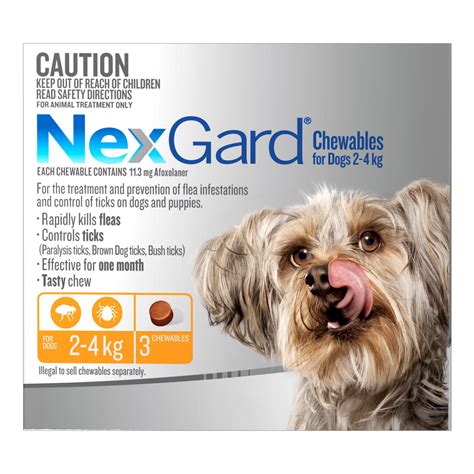NexGard: The Fastest Route to a Flea-Free Pet? A Comprehensive Guide
Fleas are a persistent nuisance for pet owners, causing itchy discomfort for our beloved furry friends and potentially transmitting diseases. NexGard, a popular chewable flea and tick preventative, promises a fast and effective solution. But is it truly the fastest route to a flea-free pet, and is it the right choice for your animal companion? This comprehensive guide explores NexGard's effectiveness, safety, and potential alternatives to help you make an informed decision.
How Does NexGard Work?
NexGard's active ingredient, afoxolaner, belongs to a class of insecticides called isoxazolines. Unlike older flea and tick preventatives, afoxolaner works by targeting the central nervous system of fleas and ticks, leading to paralysis and death. This differs from some products that merely repel insects. The crucial point is that NexGard kills fleas and ticks directly, leading to a noticeable reduction in infestation within hours of ingestion, not days.
Is NexGard the Fastest Acting Flea and Tick Preventative?
While NexGard is renowned for its rapid effectiveness, claiming it's the absolute fastest requires careful consideration. The speed of action depends on several factors including the severity of the infestation, your pet's metabolism, and even the specific flea or tick species. While NexGard typically starts killing fleas within a few hours, some other treatments might claim similar rapid action. However, NexGard's consistent performance and wide range of effectiveness against various parasites give it a strong claim as a leading contender for speed and efficacy.
What About Other Flea and Tick Preventatives?
Many other preventative options exist, each with its own mechanism of action and speed of effectiveness. Some products primarily repel insects, while others kill them through different methods. Comparisons require a careful examination of specific product labels and scientific studies comparing their performance against various infestations.
How Long Does it Take NexGard to Work?
Typically, NexGard begins killing fleas and ticks within hours of administration. You shouldn't expect immediate results, but a significant reduction in flea activity should be noticeable quickly. Complete elimination might take a few days, depending on the infestation level.
NexGard Safety and Side Effects
Like any medication, NexGard can have side effects, though they are generally mild and infrequent. The most commonly reported side effects include vomiting, diarrhea, lethargy, and loss of appetite. These are usually temporary and resolve without intervention. However, you should always consult your veterinarian if you observe any concerning symptoms in your pet. It's crucial to discuss your pet's health history and any pre-existing conditions with your vet before starting NexGard or any other preventative medication.
Is NexGard Safe for All Pets?
NexGard is generally safe for dogs but is not approved for use in cats. Always follow the dosage instructions carefully and consult your veterinarian for personalized advice based on your pet's breed, age, weight, and health status.
Are there any specific breeds that react differently to NexGard?
While NexGard is generally well-tolerated, some anecdotal evidence suggests certain breeds might exhibit a slightly higher sensitivity. However, this isn't definitively proven, and thorough veterinary consultation before administering NexGard is always advised regardless of breed.
NexGard Alternatives: Exploring Other Options
While NexGard offers a fast and effective solution for many pets, alternatives exist. These include other oral medications, topical applications, and even natural remedies (though their effectiveness is often debated). The best choice depends on your pet's individual needs, preferences, and your budget. Always discuss alternatives with your veterinarian before switching treatments.
Conclusion: Making the Right Choice for Your Pet
NexGard offers a rapid and effective approach to flea and tick control, but it's not a one-size-fits-all solution. Consider your pet's specific needs, consult with your veterinarian, and weigh the benefits and potential side effects before making a decision. Remember, responsible pet ownership involves proactively managing parasites to ensure your furry friend's comfort and health. Thorough research and open communication with your veterinarian are crucial steps in selecting the most appropriate preventative treatment.

